Location: Laie, Oahu, Hawaii
While I still have 8 months left before I return to work, it’s doubtful that I will have the chance to visit all Polynesian countries and territories (there’s 32!). Therefore, a trip to the Polynesian Cultural Centre on Oahu would provide me with a small taste of the wonders of Polynesia.
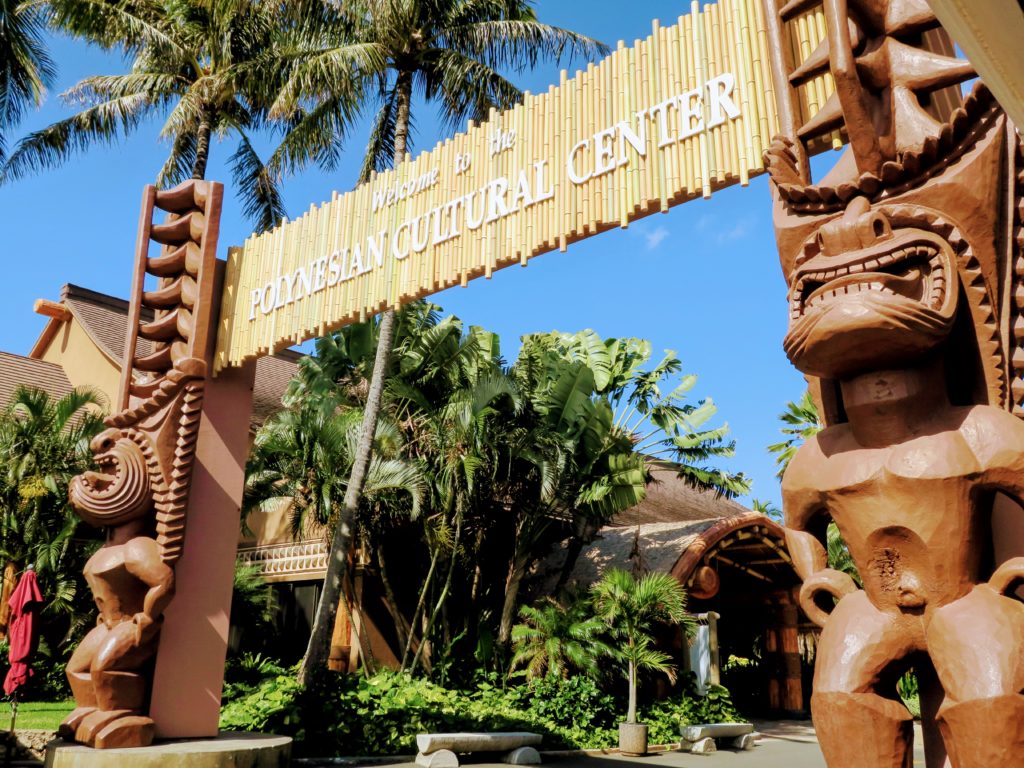 The Polynesian Cultural Centre (PCC) is a Polynesian-themed theme park and living museum located in Laie, on the northern shore of Oahu, Hawaii and one of the most frequently visited attractions in Hawaii. Interestingly enough, it’s owned and operated by the Mormon Church (The Church of Jesus Christ of Latter-day Saints)- although the only “religious” aspect is the free tour of the local Mormon Temple that is offered to those visitors who are interested . Most of the employees are university students from all over the world who have been granted scholarships by the church in exchange for working at the Polynesian Centre.
The Polynesian Cultural Centre (PCC) is a Polynesian-themed theme park and living museum located in Laie, on the northern shore of Oahu, Hawaii and one of the most frequently visited attractions in Hawaii. Interestingly enough, it’s owned and operated by the Mormon Church (The Church of Jesus Christ of Latter-day Saints)- although the only “religious” aspect is the free tour of the local Mormon Temple that is offered to those visitors who are interested . Most of the employees are university students from all over the world who have been granted scholarships by the church in exchange for working at the Polynesian Centre.
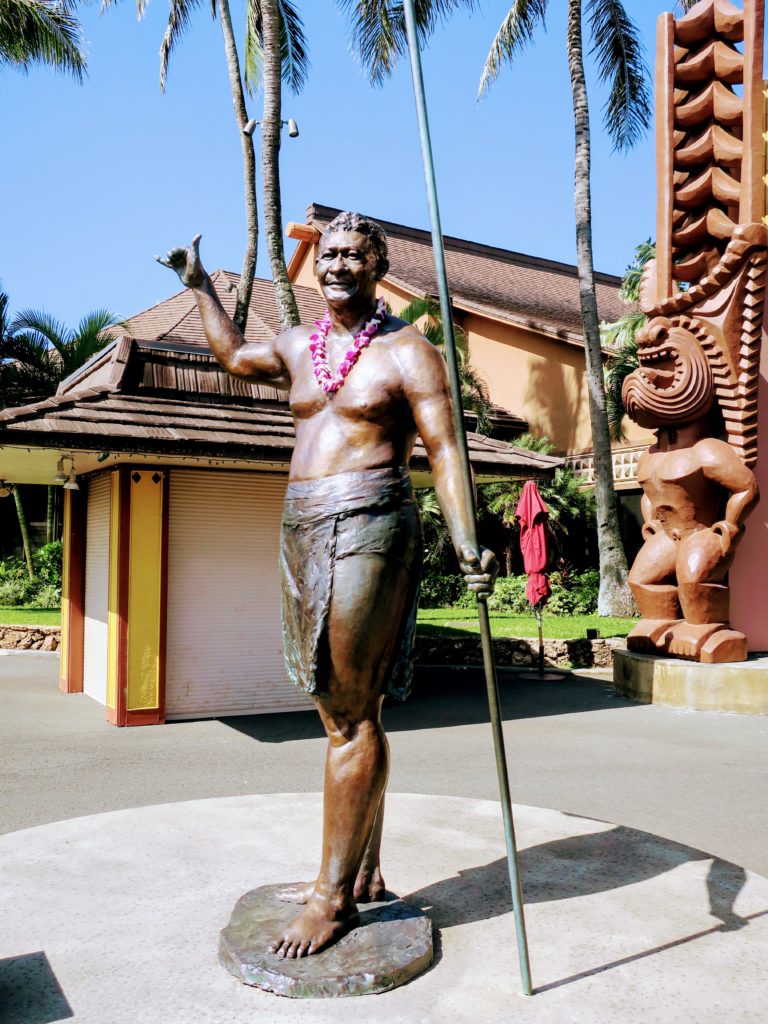 The PCC features 6 Polynesia villages, set up with performers who demonstrate various art & crafts, dances and other traditional practices of those indigenous people. They are: Hawaii, Tahiti, Samoa, Aotearoa (present-day New Zealand), Fiji & Tonga.
The PCC features 6 Polynesia villages, set up with performers who demonstrate various art & crafts, dances and other traditional practices of those indigenous people. They are: Hawaii, Tahiti, Samoa, Aotearoa (present-day New Zealand), Fiji & Tonga.
Upon entering the centre, I was greeted by THE man himself, Hamana Kalili, the said originator of the famous ‘shaka’ sign. It’s a Hawaian folk tale that Hamana Kalili has lost parts of three fingers in a sugar mill accident and thus worked for the raillines. His job was to ensure children did not illegally board the train and he is said to wave them off with his digitally-imapaired hand, resulting in the present day shaka sign (thumb and pinky out, three middle fingers bent into the palm). Children then began giving each other the shaka sign as a way to say, “everything is good” & “it’s all right” whenever Mamana Kalili was not there. And thus the tradition continued.
I was greeted with a kukui net lei, a great honor in Hawaiian culture. The kukui nut is highly important in Hawaiian tradition; it’s oil has many medicinal purposes such as its use in the treatment of burns, eczema & psoriasis (it really does work, that my word for it!) as well as for swollen joints, a natural moisturizer and has plenty of antioxidants. Traditionally, kukui nut lei were only worn by Hawaiian royalty (told you I was a queen….).
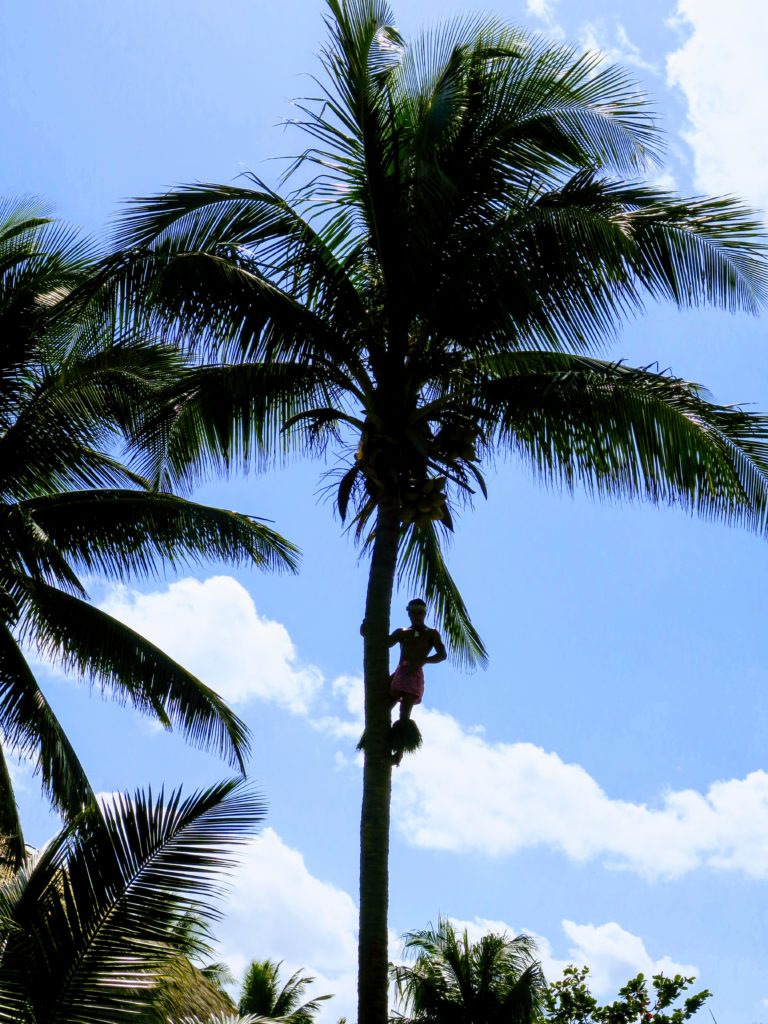
 Touring the different villages were a lot of fun. I had a chance to sample freshly made coconut bread (made in an earth oven – it was delicious; I had seconds!), get a temporary Tahitian tattoo and see how the Samoans use coconuts. One of the ‘Samoans’ scurried up the palm tree to harvest a fresh coconut.
Touring the different villages were a lot of fun. I had a chance to sample freshly made coconut bread (made in an earth oven – it was delicious; I had seconds!), get a temporary Tahitian tattoo and see how the Samoans use coconuts. One of the ‘Samoans’ scurried up the palm tree to harvest a fresh coconut.
The dancing was especially interesting and we were all treated to a ‘pageant’ on the man-made lagoon. All the different cultures perform their countries signature dances on a flat canoe. If you’re interested, check out the videos at the end of the post. And remember, most of these guys are university students!!
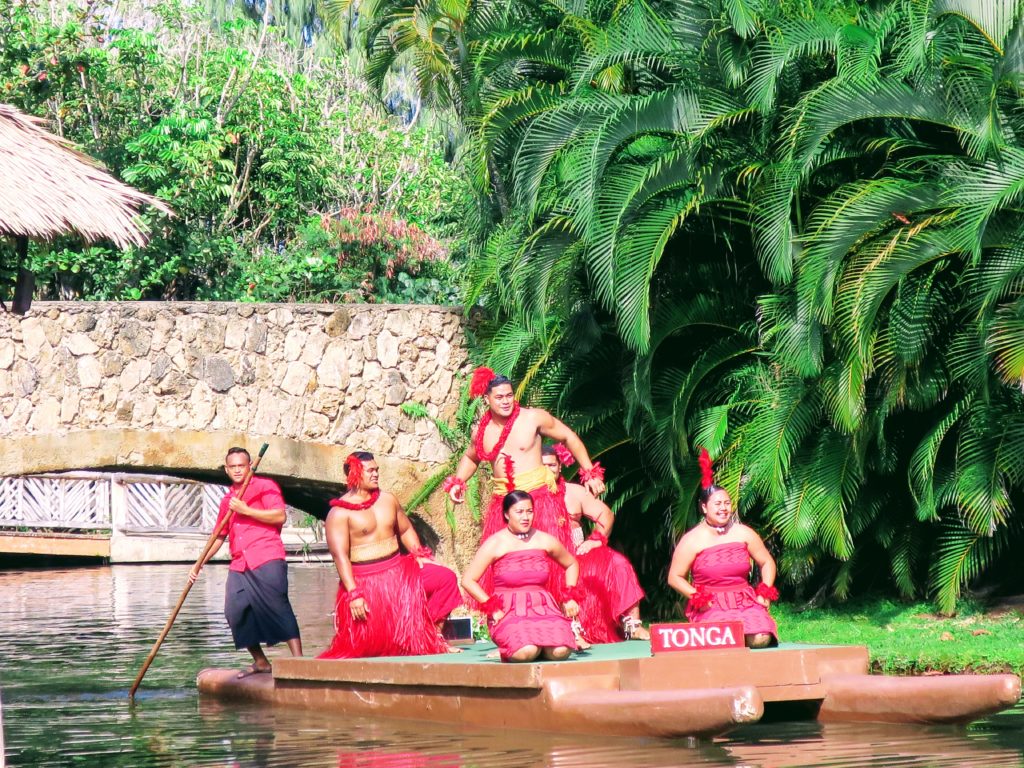 Dancers from the culture of Tonga
Dancers from the culture of Tonga
The highlight of the day was by far the ‘Ali’i Lu’au” (Royal Feast). While it’s clearly a typical “tourist trap”, it was still well worth the money and time! We were even greeted at the arrival with flower leis made out of purple and white orchids. I had booked the day as part of an organized day trip which included a half day tour of the island before arriving at the cultural centre (more on that at a later time). Like always, there were many Canadians in my group! We all found ourselves randomly sitting together (seating was assigned on a first come, first serve basis and we all ended up at the same big table).
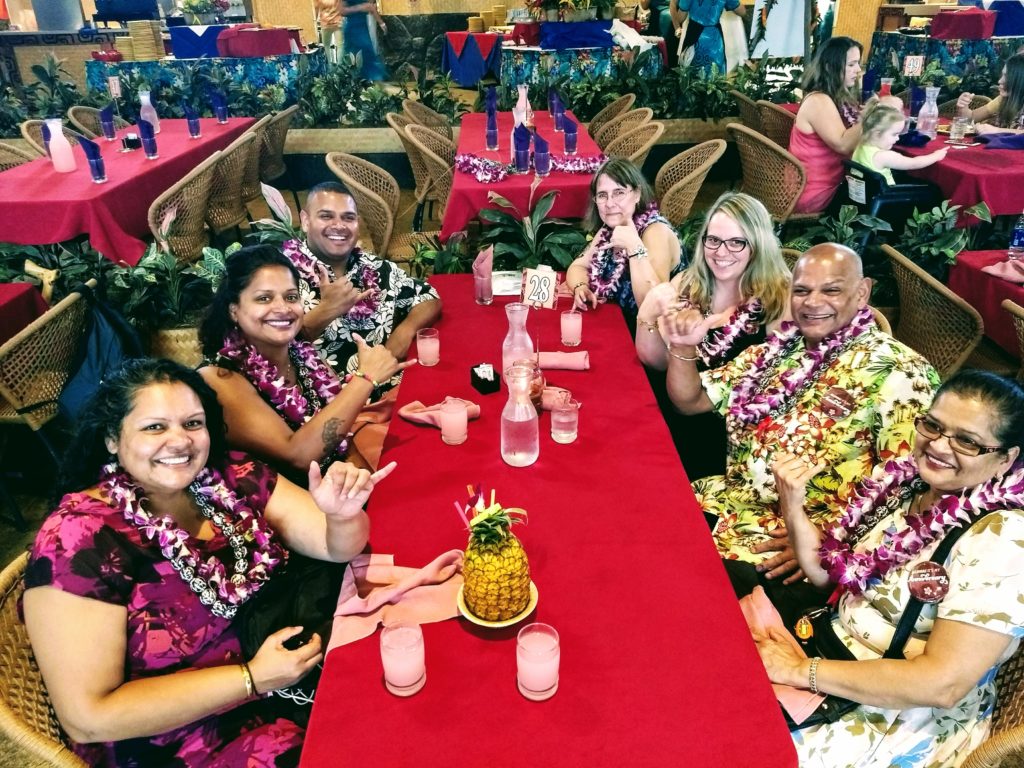 Our all Canadian (all Ontarian actually) table!
Our all Canadian (all Ontarian actually) table!
Boy, did we eat well that night! Some of the traditional foods that were served included:
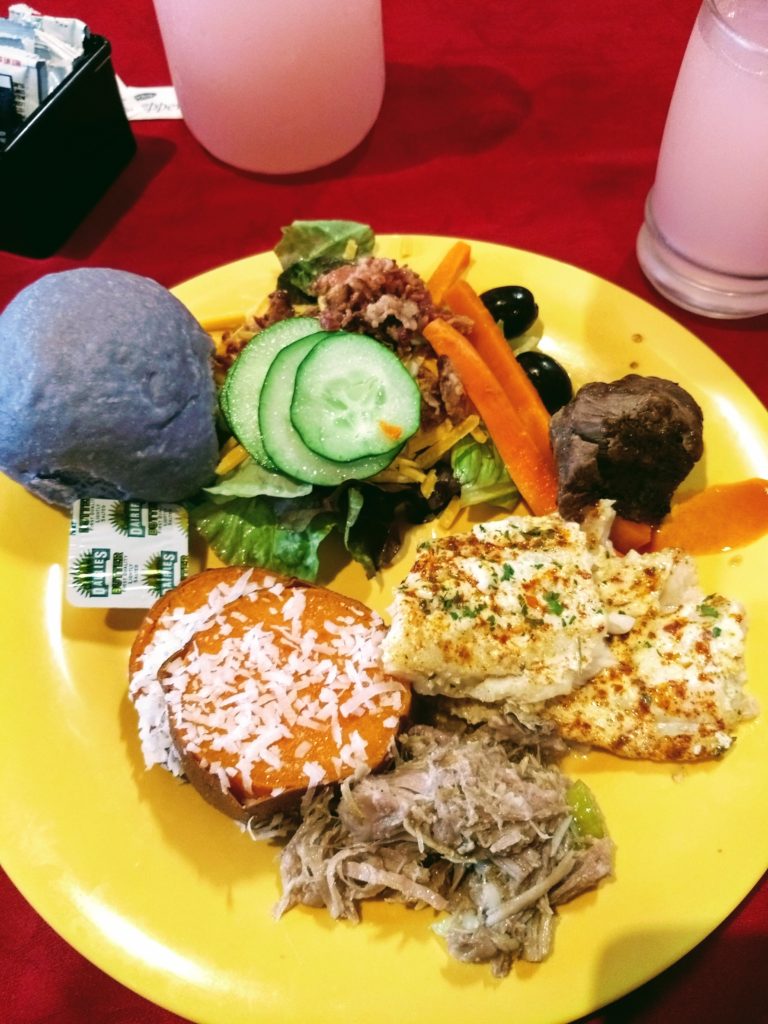 poi: the most traditional of Hawaiian dishes and also the least enjoyable. Made of mashed taro root, it’s a bland, flavourless mess. Some people have described it as eating glue. On the plus side, taro bread is about the most delicious thing I’ve ever had! (it’s the purply bread in the photo)
poi: the most traditional of Hawaiian dishes and also the least enjoyable. Made of mashed taro root, it’s a bland, flavourless mess. Some people have described it as eating glue. On the plus side, taro bread is about the most delicious thing I’ve ever had! (it’s the purply bread in the photo)- lomi-lomi salmon: lomi-lomi means massaged; it’s basically fresh salmon and tomatoes
- poke: one of my very favourite foods, even before coming to the islands. Poke literally means to slice or cut in Hawaiian. It’s raw fish (often ahi tuna) with soy sauce, sea salt, green onions and limu (algae). It’s delicious, trust me!
- And of course, the ‘piece de resistance’: laulau. Laulau is pork wrapped in taro leaved and cooked in an imu (underground oven). I don’t consider myself a great carnivore, however this pork was so juicy and tender, I had seconds!
The song that Timon and Pumba sing in the Lion King was definitely running through my head during the feast. ♫ Lu’au! If you’re hungry for a hunk of fat and juicy meat. Eat my buddy Pumbaa here because he is a treat. Come on down and dine. On this tasty swine. All you have to do is get in line. Aaaare you achin’ (Yup, yup, yup). Foooor some bacon? (Yup, yup, yup). Heeee’s a big pig (Yup, yup). You could be a big pig too. ♫
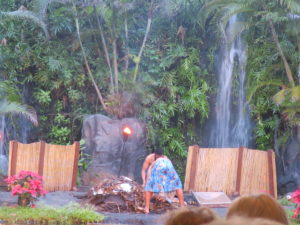
 shirtless young men (seriously, did no one wear shirts?) unearthed the laulau
shirtless young men (seriously, did no one wear shirts?) unearthed the laulau
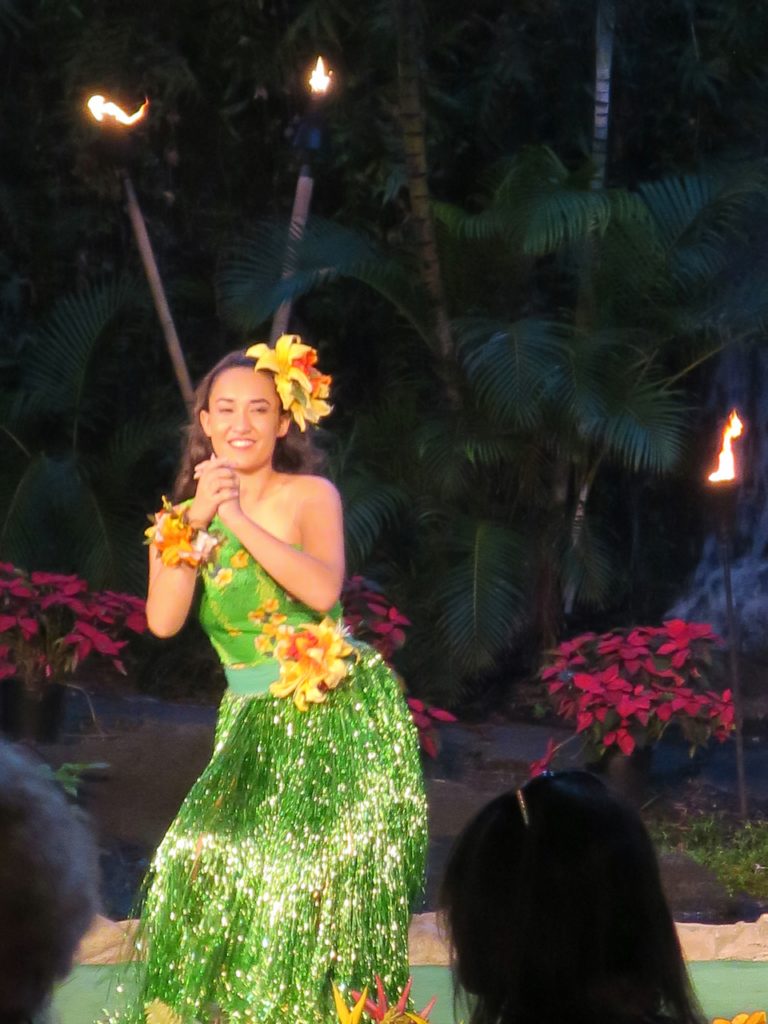
Throughout the meal, we were treated to some traditional Polynesian entertainment, including a 15-year-old fire dancer! The evening concluded with an amazing show (no photos allowed sadly) entitled: Ha-Breath of Life. The show told the story of a man, from birth to adulthood and featured song & dance from throughout Polynesia. To say is it was spectacular is an understatement. At one point, the dancers were throwing themselves, sitting, overtop fire! And remember, these are students! Such a fantastic way to end a lovely day spent at the Polynesian Cultural Centre!
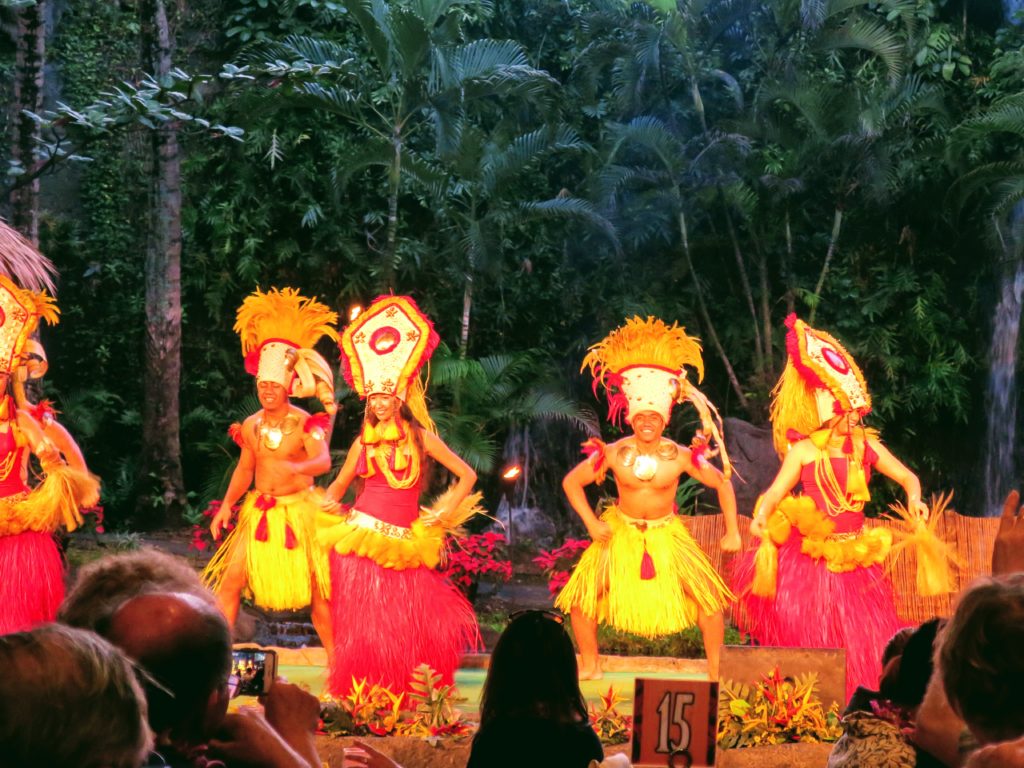
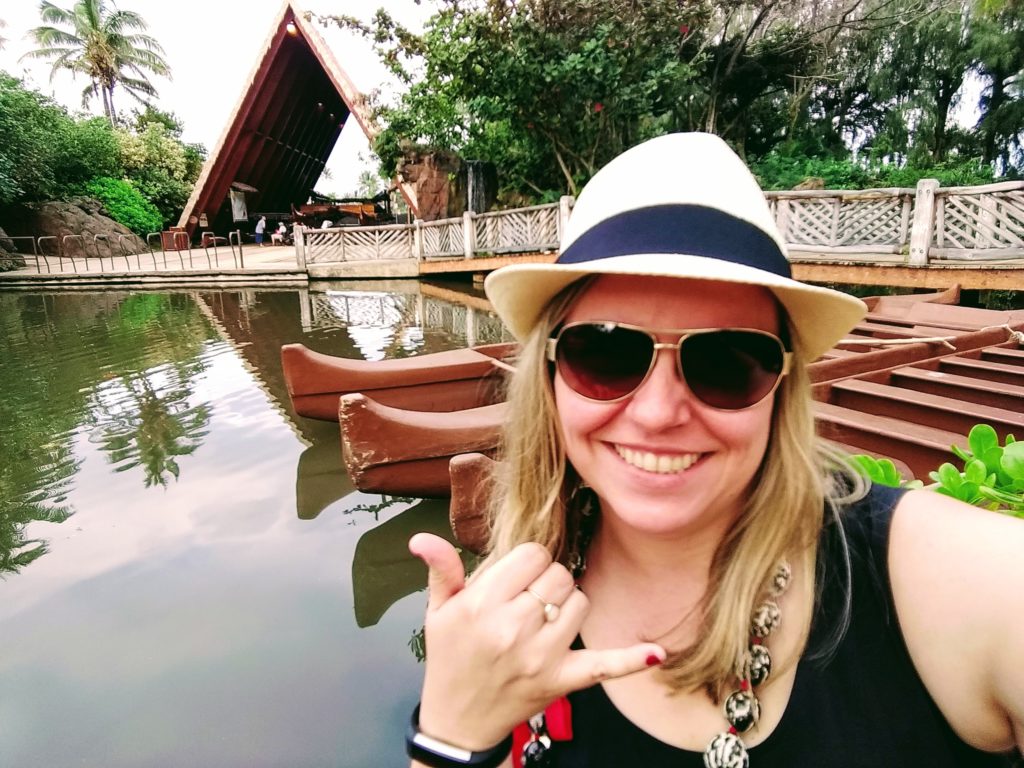 Here I am, throwing the shaka sign. It was indeed ‘all good’. You can also see my kukui nut lei in the photo.
Here I am, throwing the shaka sign. It was indeed ‘all good’. You can also see my kukui nut lei in the photo.
——————————————————————————————–
For those interested, here are some videos of tradition Polynesian dances.
Below are Maori warriors from Aotearoa (New Zealand) performing a traditional ‘haka’ (war cry / dance):
Traditional hula from Hawaii:
Tahitian dancers (we had a ‘lesson’ in this dance…. it’s hard. I’ll leave it at that):
Samoa; just after I stopped filming, the samoans starting dancing vigorously and were so rocking the boat to and fro that the driver fell off!:
Fiji:
Traditional entertainment during the Lu’au:
This girl was only 15!
